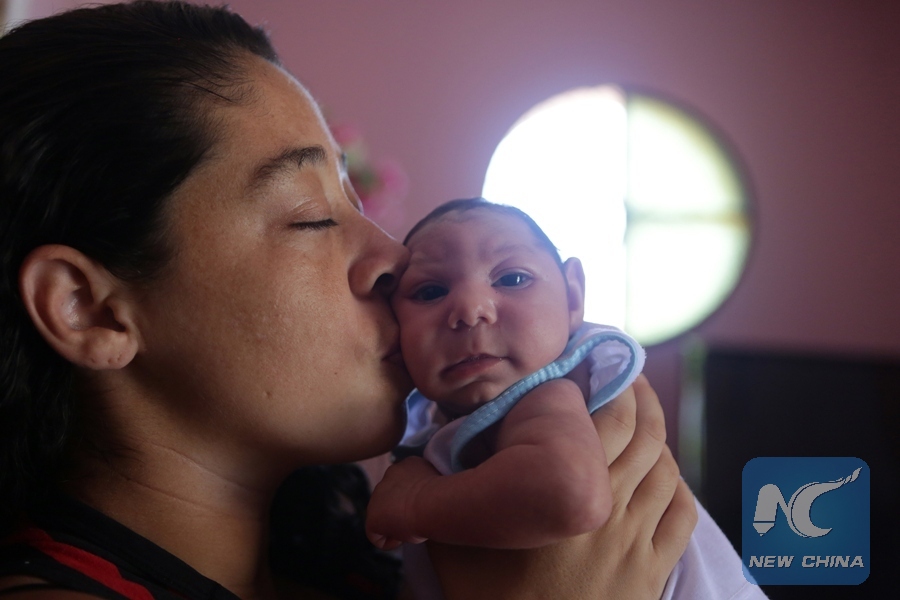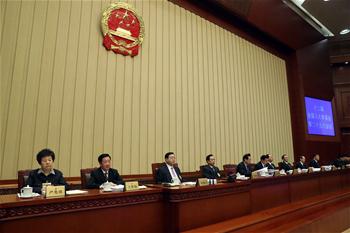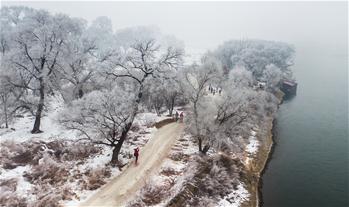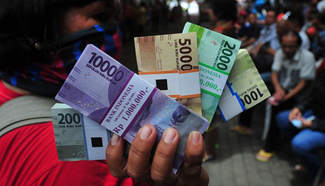
File photo taken on Feb. 4, 2016, shows Pollyana Rabello (L), holding her baby, Luiz Philipe, who was born with microcephaly, in their house in Marica, Rio de Janeiro state, Brazil. (Xinhua/Daniel Castelo Branco/Agencia o Dia/AGENCIA ESTADO)
WASHINGTON, Dec. 19 (Xinhua) -- The Zika outbreak in South America was fuelled by the El Nino phenomenon of 2015, a new study said Monday, predicting that a potential seasonal transmission risk for the mosquito-borne virus may exist in the southeastern United States, southern Europe, and some other places during summer.
The study, published in the U.S. journal Proceedings of the National Academy of Science, used a new epidemiological model that looked at how climate affects the spread of Zika by both of its major vectors, the yellow fever mosquito (Aedes aegypti) and the Asian tiger mosquito (Aedes albopictus).
According to researchers at the University of Liverpoo, the model used the worldwide distribution of both vectors as well as temperature-dependent factors, such as mosquito biting rates, mortality rates and viral development rates within mosquitoes, to predict the effect of climate on virus transmission.
It found that in 2015, when the Zika outbreak occurred, the risk of transmission was greatest in South America.
The researchers believed that this was likely due to a combination of El Nino -- a naturally occurring phenomenon that sees above-normal temperatures in the Pacific Ocean and causes extreme weather around the world -- and climate change, creating conducive conditions for the mosquito vectors.
El Ninos occur every three to seven years in varying intensity, with the 2015 El Nino, nicknamed the "Godzilla," one of the strongest on record. Effects can include severe drought, heavy rains and temperature rises at global scale.
Cyril Caminade, a population and epidemiology researcher who led the work, said in a statement: "It's thought that the Zika virus probably arrived in Brazil from Southeast Asia or the Pacific islands in 2013.
"However, our model suggests that it was temperature conditions related to the 2015 El Nino that played a key role in igniting the outbreak -- almost two years after the virus was believed to be introduced on the continent."
"In addition to El Nino, other critical factors might have played a role in the amplification of the outbreak, such as the non-exposed South American population, the risk posed by travel and trade, the virulence of the Zika virus strain and co-infections with other viruses such as dengue."
The researchers said their model predicts a potential seasonal transmission risk for Zika virus, in the south eastern United States, and to a lesser extent over southern Europe during summer in the Northern hemisphere.
They also planned to adapt the model to other important flaviviruses, such as Chikungunya and Dengue fever, with the aim of developing disease early warning systems that could help public health officials prepare for, or even prevent, future outbreaks.
The World Health Organization recently declared that Zika, which has been linked to birth defects and neurological complications, will no longer be treated as an international emergency, but as a "significant enduring public health challenge."










